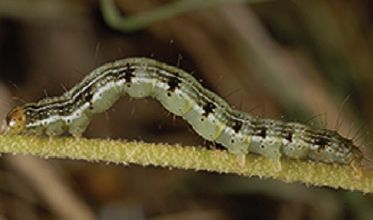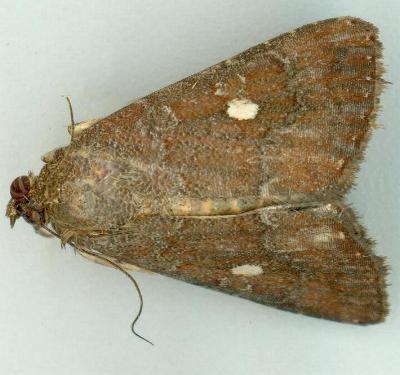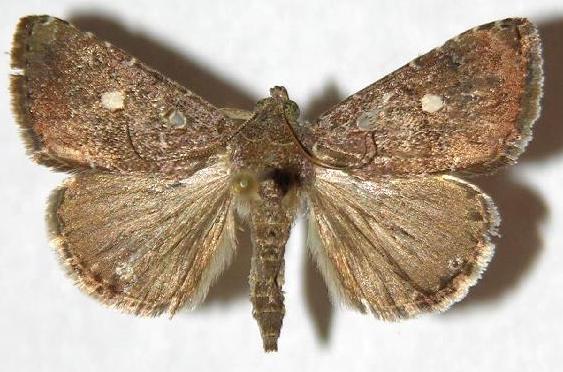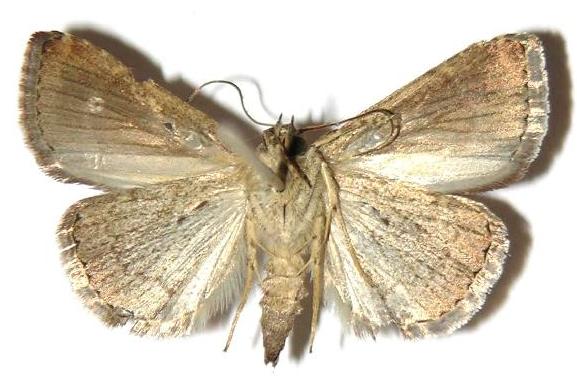
| (one synonym: Perigea octo) ACONTIINAE, NOCTUIDAE, NOCTUOIDEA | (donherbisonevans@yahoo.com) and Stella Crossley |

(Photo: courtesy of
David L. Wagner and Shawn Binns, University of Connecticut)

| (one synonym: Perigea octo) ACONTIINAE, NOCTUIDAE, NOCTUOIDEA | (donherbisonevans@yahoo.com) and Stella Crossley |

(Photo: courtesy of
David L. Wagner and Shawn Binns, University of Connecticut)
This caterpillar is green with several black-edged white stripes along the back and sides. The head is either green or brown, with black spots. The caterpillar has a reduced number of prolegs, and so moves in a looper fashion. When disturbed: it thrashes its head and tail from side to side. It has been reported feeding on:

The adult moth has rusty brown wings, with a number of thin sinuous pale lines across, and a variable white mark near the middle, of each forewing. The hindwings are plain brown. The moth has a wing span of about 2 cms.


The species is found around tropics, including
and also in Australia in

Specimens of this species are often misidentified as Amyna octo or Amyna natalis or Amyna stricta.
Further reading :
Achille Guenée,
Noctuélites,
in Boisduval & Guenée:
Histoire naturelle des insectes; spécies général des lépidoptères,
Volume 9, Part 5, Section 1 (1852), p. 407, No. 378b.
Buck Richardson,
Tropical Queensland Wildlife from Dusk to Dawn Science and Art,
LeapFrogOz, Kuranda, 2015, p. 112.
 caterpillar |  butterflies |  Lepidoptera |  moths |  caterpillar |
(updated 27 August 2012, 1 July 2025)